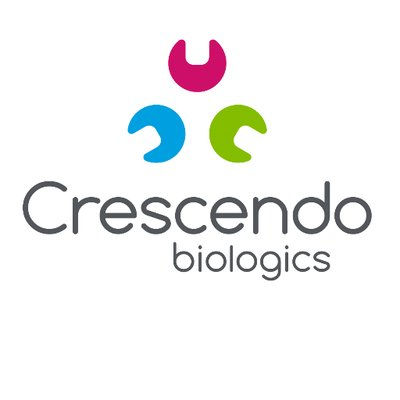Acting on an option out of 2016 collaboration deal, Japan’s Takeda Pharmaceutical licensed Humabodies directed to one of its oncology targets from Cambridge, UK’s Crescendo Biologics.
Acting on an option out of 2016 collaboration deal, Japan’s
Takeda Pharmaceutical
licensed
Humabodies directed to one of its oncology targets from Cambridge, UK’s
Crescendo Biologics
.
Crescendo developed multi-functional Humabody therapeutics based on a transgenic mouse platform that generates 100 percent human VH domain building blocks (Humabody VH). These molecules can be configured to engage therapeutic targets, which results in larger therapeutic windows compared to typical IgG approaches.
Humabodies are small and can quickly penetrate and accumulate in tissues and tumors while quickly clearing from tumors and tissues. This
minimize
s
systemic toxicity.
In 2016, the two companies formed a collaboration and license agreement. In it, Takeda has the right to develop and commercialize Humabody-based therapeutics that came out of the collaboration. Crescendo is eligible for clinical development, regulatory and sales-based milestones up to $754 million in addition to royalties on Humabody-based product sales by Takeda.
“The team at Crescendo has made great progress on our Humabody programs, working closely with the Takeda team,” stated
Peter Pack,
chief executive officer of Crescendo “To date, we have met all the technical milestones on time or earlier than planned, which is proof of our excellent collaboration. We are delighted that the option to license has been taken by Takeda ahead of schedule and look forward to further future successes.”
The decision to exercise the option comes earlier than expected.
Crescendo’s lead compound is CB307, a novel bispecific PSMA-targeted T-cell enhancer for the selective activation of tumor-specific T-cells exclusively within the tumor microenvironment. This avoids systemic toxicity. The company states that, “This highly modular format can be reconfigured to create a pipeline of multiple therapeutic candidates each treating a different cancer indication, by targeting any of a range of alternative tumor-specific markers.”
In mid-August, Crescendo
announced
it had hit another technical milestone in the Takeda collaboration. Although the company did not disclose the amount of the milestone payments, it did indicate it had delivered another diverse panel of functional Humabody leads against Takeda’s second selected target. A previous announce about an equivalent milestone was announced in April 2018.
At the time, Pack stated, “Our highly productive relationship draws together Takeda’s deep oncology experience with Crescendo’s expertise in developing optimally configured Humabodies. Together we are fast progressing towards our goal of developing next generation, highly modular and multi-functional biologics against cancer. This is another important step forward for Crescendo and further validates the power of our innovative technology.”
The companies did not specify the targets or the specific Humabody. Crescendo lists three compounds on its website that are available for partnering or out-licensing. They are all in oncology. CB201 is a differentiated biparatropic PD-1 antagonist that has shown enhanced in vivo efficacy over commercial IgG-based PD-1 antagonists. CB213 is a novel bispecific PD-1 X LAG-3 antagonist that delivers potent simultaneous dual checkpoint blockade in patients that don’t respond to PD-1 blockade alone. And CB108, a half-life extended biparatropic PSMA-specific Humabody Drug Conjugate (HDC) that has shown superior tumor targeting, enhanced internalization and highly efficient accumulation in target-positive tumors.







